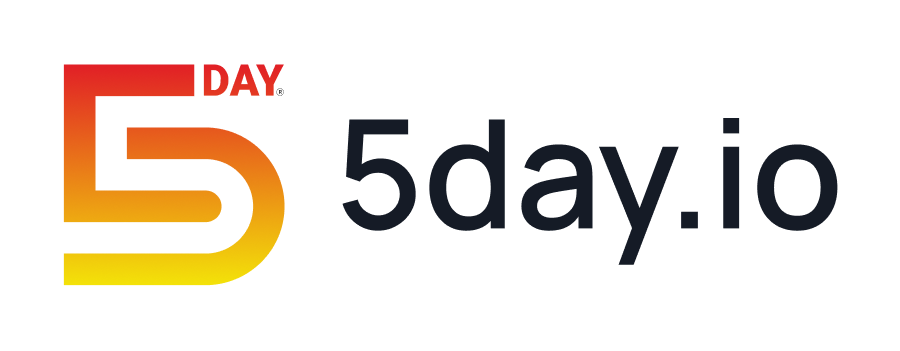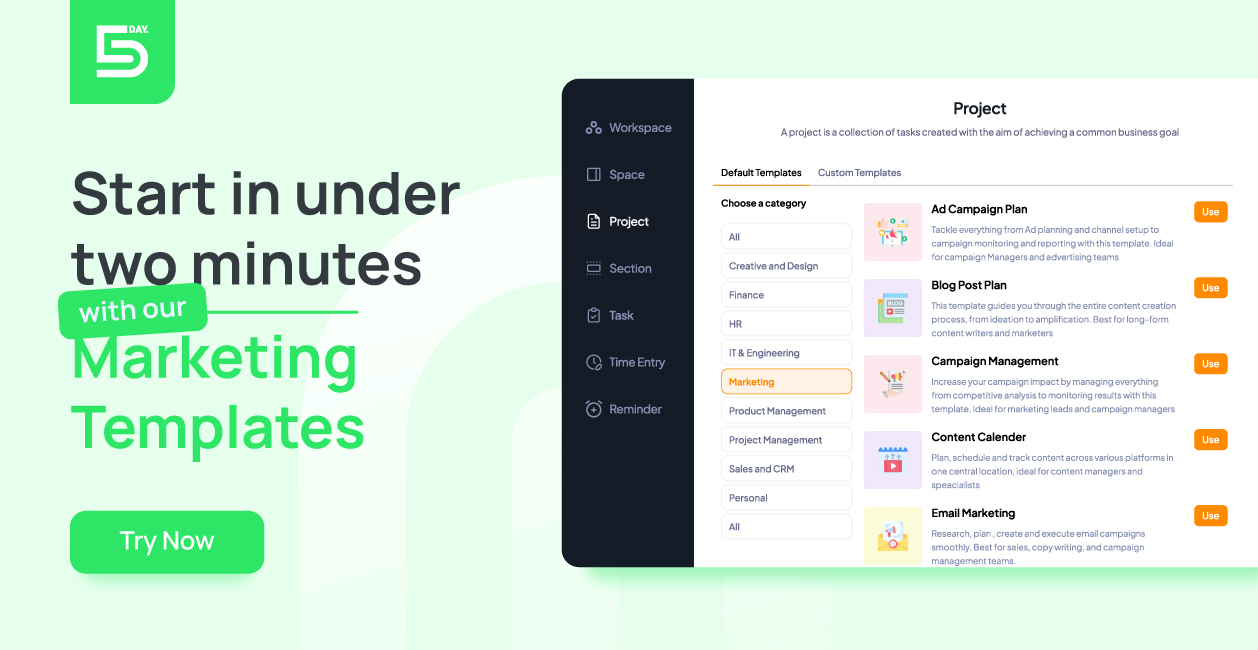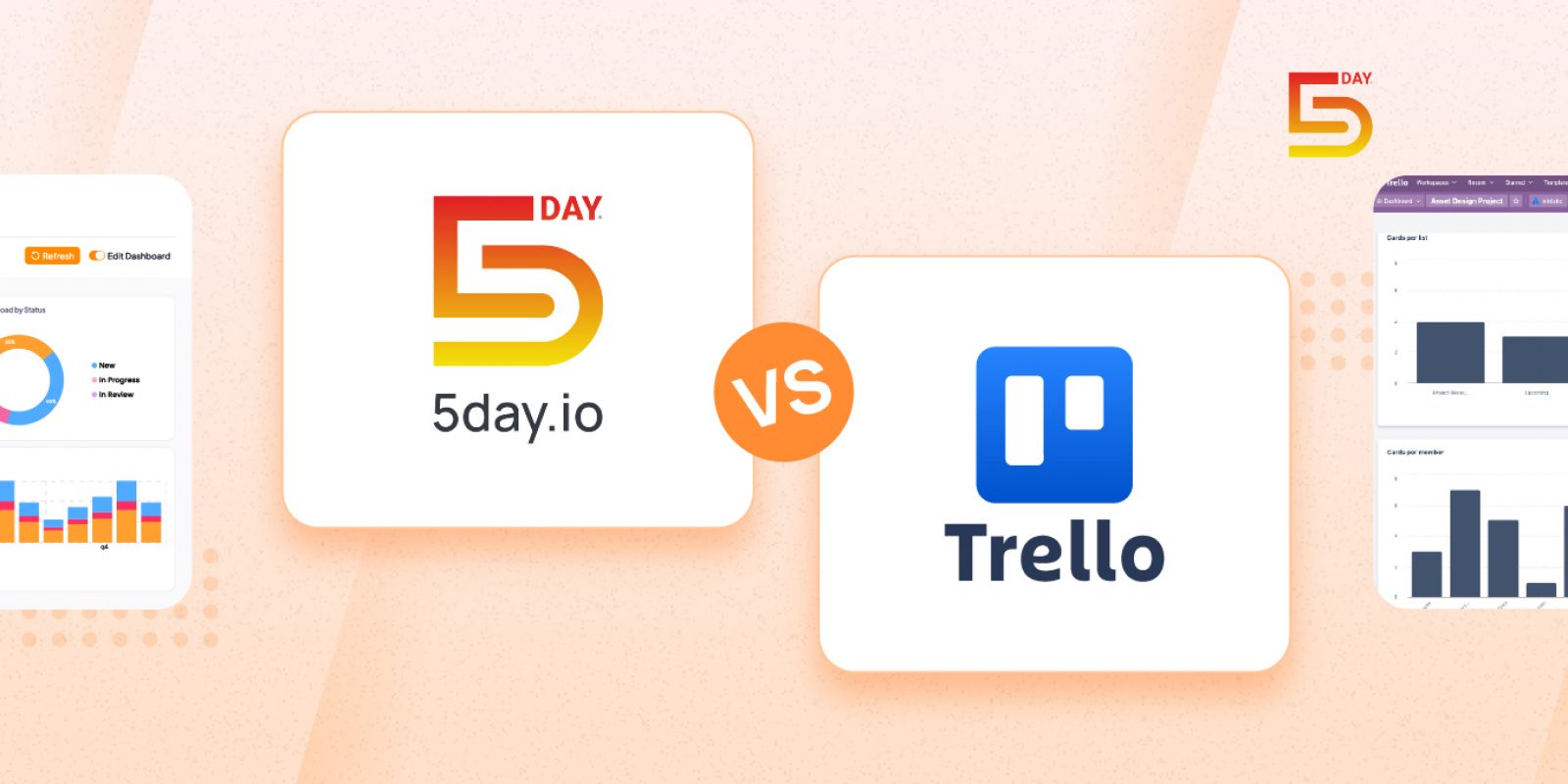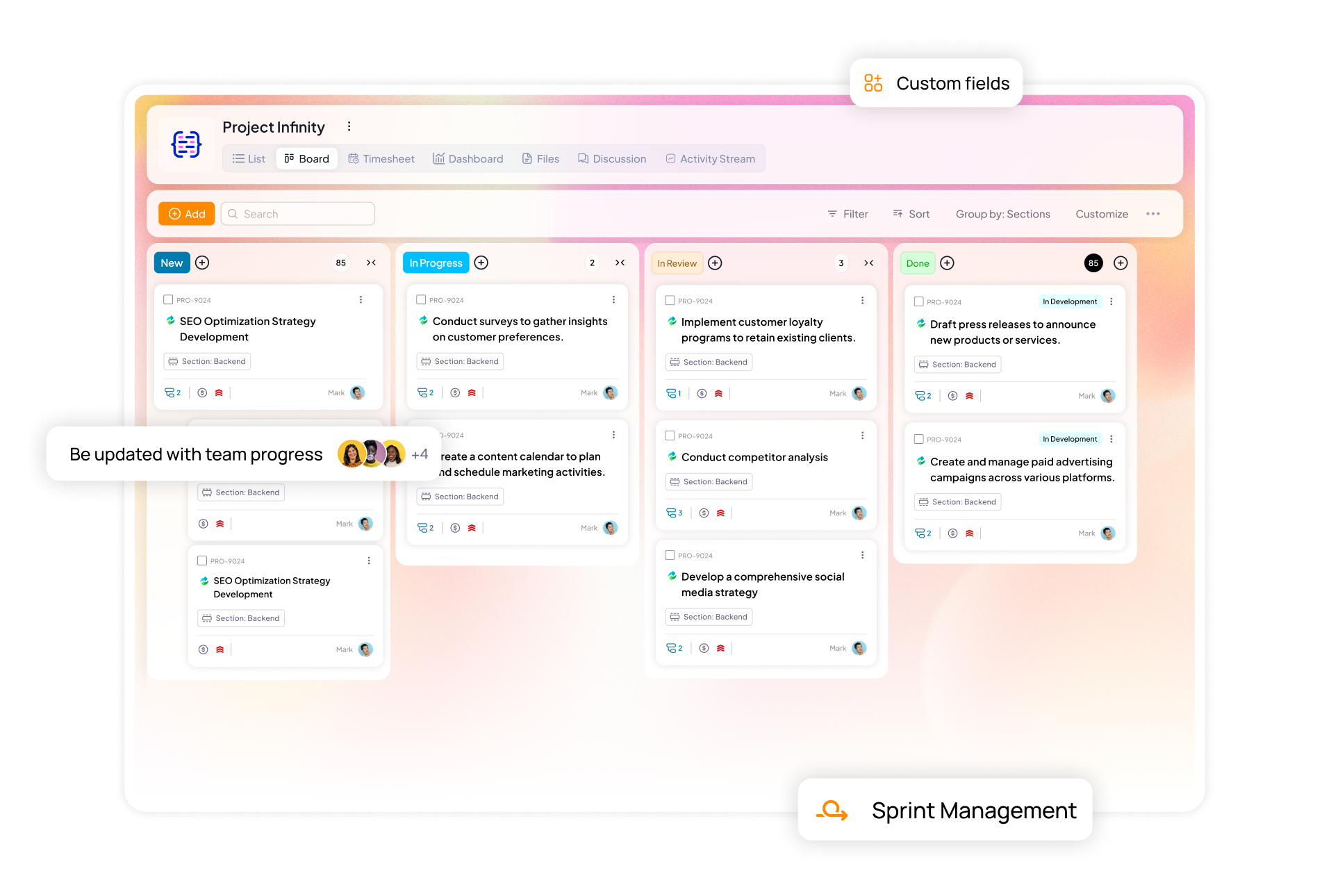Wrike is a widely used project management platform, but marketing teams often find that its flexibility comes with complexity.
Campaign work moves quickly and trying to fit that into a broad system can slow things down massively.
If you’ve spent time trying to shape Wrike around your marketing needs, you may have noticed it doesn’t always align smoothly with your workflows. Sometimes, it can feel like more effort managing the platform than getting campaigns across the finish line.
This article will take a look at Wrike alongside 5day.io and explore how each serves marketing teams differently. The goal is to help you decide if a marketing-ready tool could give your workflow the boost it needs.
Why the right campaign management tool matters for marketers
Without the right system, the high energy marketers have towards creative projects often get lost. The right campaign management tool gives that energy a home. It keeps deadlines clear, files easy to find, and budgets under control, so instead of chasing status updates, teams can focus on creating work they’re proud of.
For marketers running multiple campaigns at once, this structure is more than helpful. It means fewer fires to put out, and more confidence that nothing is slipping through the cracks.
Most importantly, the right tool feels easy. At its core, marketing campaign management solution is about people working better together. The right tool makes that possible.
Introducing Wrike vs 5day.io
Do you want a system that tries to do everything, or one built with you in mind? That’s the real question you should be asking.
Wrike is a well-known project management platform. It’s powerful and used across countless industries. Its strength lies in flexibility and scalability. But for marketers, that strength can be cumbersome.
That’s where 5day.io takes a different path.
Unlike broad project management tools, it was built for a specific audience: marketing teams and agencies who juggle multiple campaigns and multiple clients at once. It understands how mind-boggling constant context-switching and the pressure to prove ROI are. Instead of asking you to bend a generic tool to fit your world, 5day.io meets you where you are.
Wrike gives you a toolbox full of options, whereas 5day.io gives you a workspace that already speaks your language.
Both project management software aim to improve collaboration, but their audiences are very different. Wrike is for anyone managing projects across industries. 5day.io is for marketers who want less time lost in process and more time creating campaigns that actually land.
If you need a platform that, does it all, Wrike is a safe bet. If you want a partner that truly understands marketing, 5day.io may feel like the breath of fresh air.
Wrike vs 5day.io comparison
The tool you choose shapes whether the chaos of every campaign feels manageable or exhausting.
Getting started
Wrike
When you first open Wrike, you’re met with a wide set of options and features. This level of flexibility allows teams to mold the workspace to their exact needs, whether it’s marketing campaigns, IT projects, or product roadmaps. The upside is that you get a system that feels uniquely tailored, with custom workflows, dashboards, and reporting views for different departments.
Wrike has also added helpful onboarding tools like smart project suggestions and guided workflows, making the ramp-up smoother than before.
While the setup requires some initial investment, teams looking for a long-term, customizable platform will appreciate the groundwork it lays for scalability and control.
Read Also: All About Marketing Workflows
5day.io
5day.io provides a smooth and fast onboarding experience with over 40 pre-built marketing templates tailored for different campaign types and workflows. This means marketing teams can jump straight into planning without lengthy setup or configuration.
The platform offers flexible views, including list, board, and timeline, to adapt instantly to your team’s preferred way of working.
Additionally, 5day.io supports easy user invitations and role-based permissions, to help teams and agencies get started securely and efficiently.
Best For
Wrike is best suited for organizations that have the time and resources to personalize their workflows extensively before getting started. 5day.io is great for marketing teams and agencies that want to hit the ground running from day 1.
Planning the campaign
Wrike
Planning your campaign in Wrike means starting with a blank canvas that can adapt to almost any process. You can map out projects with Gantt charts for timelines, Kanban boards for agile-style sprints, or calendar views for deadline-driven campaigns.
Wrike also offers advanced automation, and custom fields, giving you the ability to design workflows that mirror your team’s style. While it’s not built solely for marketers, its flexibility makes it appealing for cross-functional organizations that want one tool to cover multiple project types.
5day.io
Campaign planning in 5day.io is designed specifically for marketing workflows. Tasks and subtasks can be created with custom fields like story points, priority, and time estimates, fitting neatly into project phases or sprint cycles.
The platform supports dependencies such as start-to-start and end-to-end, allowing teams to sequence their work realistically. With task automation and recurring tasks, repetitive activities become hands-free, letting marketers focus on creative and strategic execution. Inline editing and bulk updates make it easy to adjust plans on the fly as priorities shift.
Best For
Wrike suits teams that need a highly adaptable and flexible tool capable of handling many types of workflows, even if it means more setup effort. 5day.io works best for marketing teams that want workflows built specifically around campaigns.
Working with your team
Wrike
Collaboration in Wrike is structured to support organizations where conversations, and approvals may come from different teams or even departments. You can share files, add comments, and tag collaborators, while also taking advantage of features like proofing and approvals for creative assets.
Wrike’s newer AI tools help locate project information quickly, and integrations with communication platforms like Slack or Teams help reduce silos. While discussions sometimes sit apart from tasks, Wrike shines in environments where collaboration must flow across marketing, product, and operations.
Read Also: How Project Management Tools Help Marketing Teams in Client Collaboration
5day.io
Comments, file attachments, and tagging happen right where the work is, inside tasks and subtasks, reducing context switching and ensuring everyone stays aligned. The marketing project management software supports rich media uploads, including images and videos, facilitating clear briefings and feedback. Notifications, reminders, and activity streams keep every team member aware of updates and deadlines.
Best For
Wrike is ideal for organizations that require collaboration across many departments and can manage communication through separate channels. 5day.io is a better fit for marketing teams seeking seamless, task-centered collaboration that keeps everything relevant and connected in one place.
Tracking progress
Wrike
Wrike has one of the most comprehensive reporting systems in the project management space. You can build custom dashboards, run workload reports, and measure performance across multiple projects in real time.
For teams that need to zoom out, Wrike’s portfolio-level reporting gives executives a consolidated view of all ongoing campaigns and initiatives. While the reports are broad and not marketing-specific by design, they are powerful for organizations that want detailed operational oversight and the flexibility to customize metrics based on goals.
5day.io
5day.io offers detailed analytics and reporting widgets that deliver insights into progress and productivity. You can track KPIs across projects and campaigns. Visual widgets like bar charts, pie charts, and timelines offer an intuitive way to understand where your campaign progress stands at a glance.
Best For
Wrike caters well to teams looking for in-depth operational reports across various project types. 5day.io is designed to give marketers clear and actionable insights focused directly on campaign progress.
Scaling up
Wrike
Wrike is purpose-built for large and growing organizations. It can handle complex structures, layered permissions, and multi-departmental workflows without breaking. As your team expands, Wrike offers role-based access, workload balancing, and time tracking to ensure accountability across projects.
Enterprises also benefit from Wrike’s advanced security features, compliance standards, and administration controls, which make it a reliable choice for organizations dealing with sensitive data or regulated industries. While onboarding may require training, the platform’s depth pays off for businesses managing diverse teams at scale.
5day.io
Built to support agencies and growing teams, 5day.io scales without adding complexity. User roles and custom permissions let organizations define access and responsibilities clearly as the team grows.
Onboarding new users is simple with features like multi-account support for freelancers and agencies juggling multiple clients. Time tracking and approval workflows help maintain accountability even as projects multiply. The platform’s modular design ensures that expanding teams can customize the setup to fit evolving needs smoothly.
Best for
Wrike is a strong choice for large enterprises with resources to invest in training and system management. 5day.io fits well for agencies and marketing teams that want to scale quickly and easily.
Integrating your tools
Wrike
Wrike connects with an extensive range of apps, from CRM platforms like Salesforce to development tools such as GitHub, alongside everyday apps like Outlook, Gmail, and Microsoft Teams. Its integration ecosystem ensures that different departments, whether they’re in sales, marketing, or engineering, can work in alignment.
For enterprises with multiple systems in play, Wrike’s ability to tie everything together into one central hub is a major strength.
5day.io
5day.io connects with essential marketing and collaboration tools to keep workflows centralized. Popular integrations include Slack, Teams, Google Drive, OneDrive, calendar apps, and Zapier for workflow automation. Direct integration with communication and file-sharing platforms means campaign assets and conversations stay in sync without jumping between apps.
This focused approach reduces clutter and helps marketers maintain a clear, connected workspace.
Best For
Wrike makes sense for organizations that need many departmental integrations as part of a broader enterprise tech set. 5day.io is best for marketing teams who want easy, essential integrations that keep their campaign work focused and organized.
The choice
Wrike is a broad, enterprise-grade platform. It works if you’re managing every kind of project under the sun. 5day.io is different. It feels less like a system you’re forced to learn, and more like a partner that finally gets how campaigns really run.
Pros and cons of Wrike
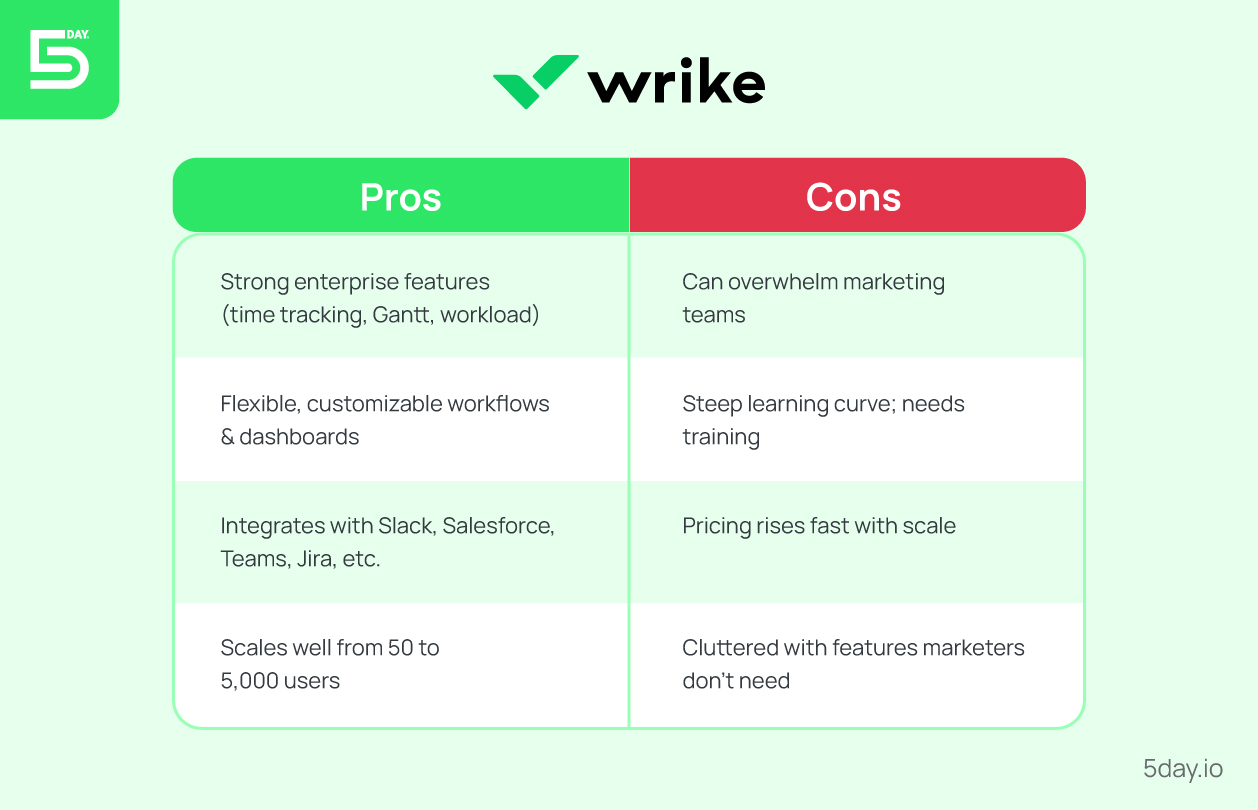
But as with any tool, its strengths can feel like weaknesses depending on who you are and what you need.
Let’s break it down in detail.
Pros of Wrike
1. Robust features for enterprise-level project management
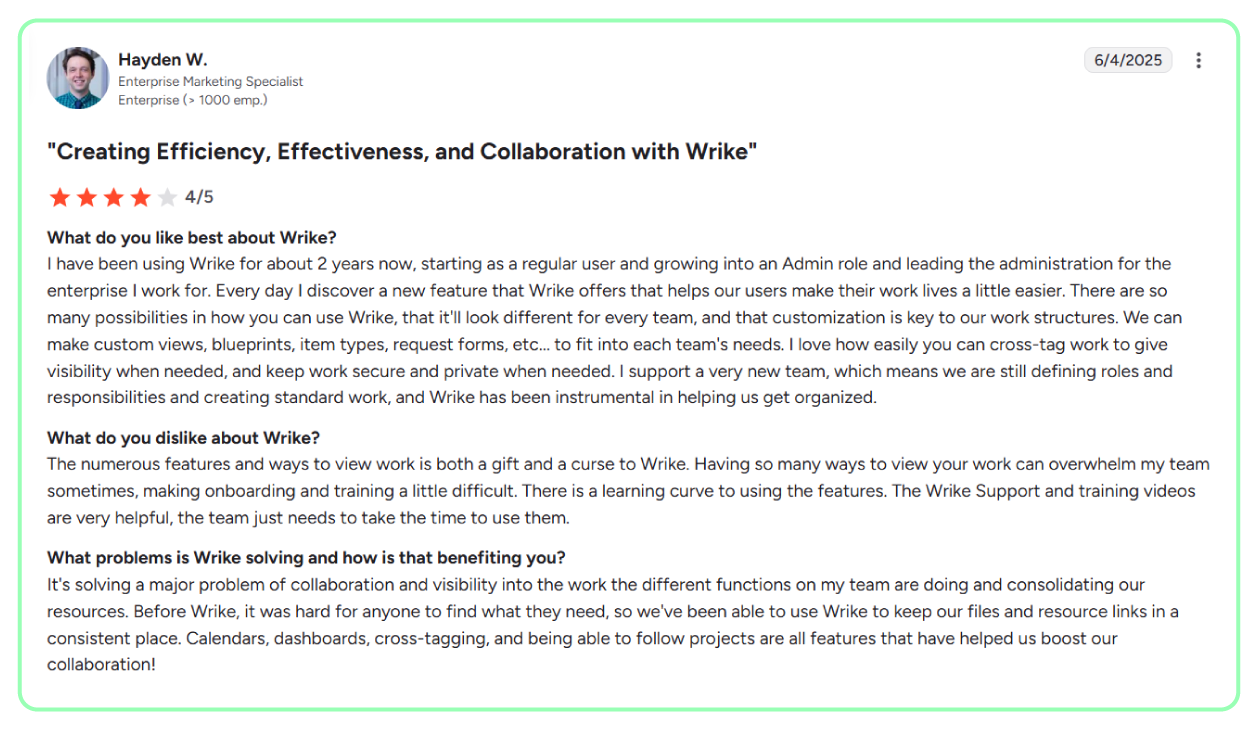
Wrike has enhanced its time tracking and workload management tools, making it easier to balance team capacity and deadlines. The platform’s advanced Gantt charts now offer more interactivity and predictive scheduling to help anticipate project delays early.
Teams can utilize custom request forms to standardize intake processes, which is especially helpful for enterprises handling hundreds of incoming tasks daily. For organizations running large-scale initiatives, Wrike’s solid foundation helps keep complex projects and cross-functional teams coordinated efficiently.
2. Highly customizable workflows and dashboards
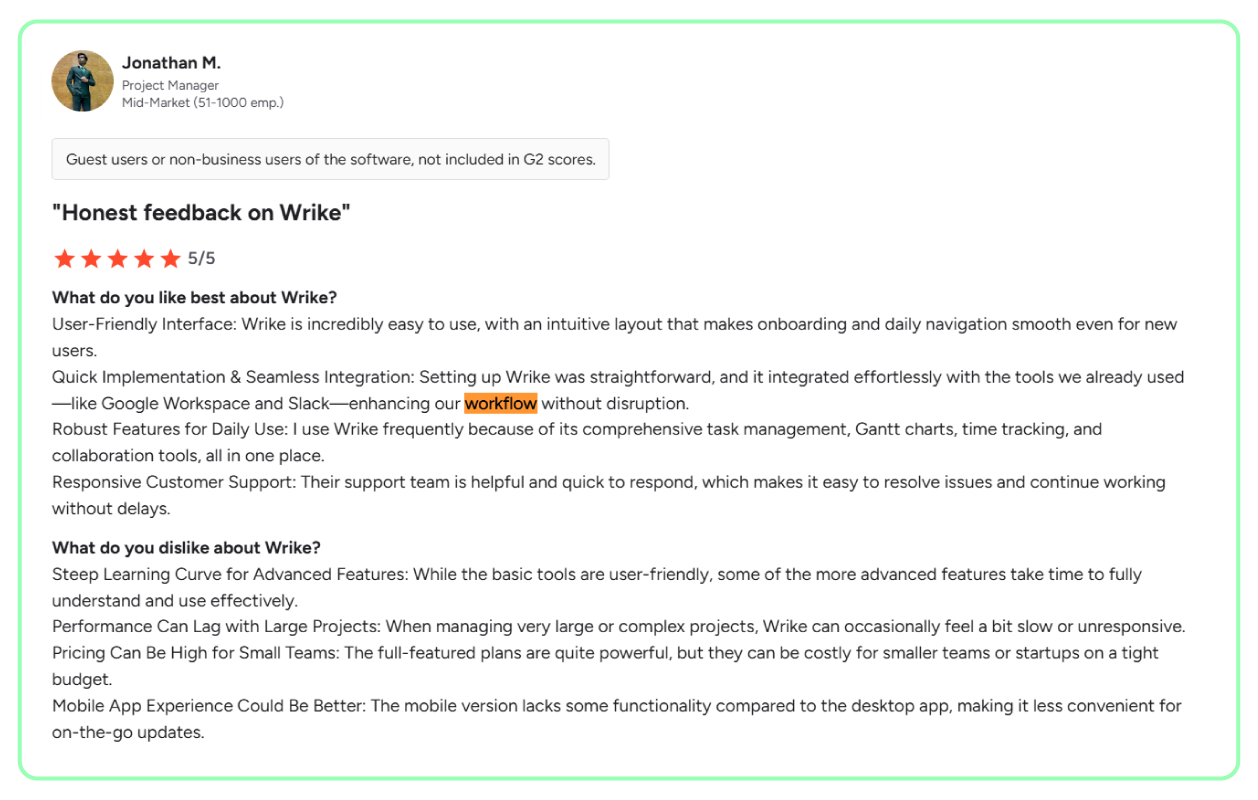
The recent 2025 update introduced AI-powered workflow suggestions that recommend optimizations based on your team’s historical patterns, helping reduce manual configuration.
Dashboards offer new widget options and greater data visualization flexibility, allowing teams to keep a pulse on what matters most, whether it’s campaign progress, resource bottlenecks, or budget tracking. This adaptability lets varied departments like marketing, IT, finance, and HR tailor Wrike to their exact operational needs, all within one secure platform.
3. Wide range of integrations with business tools
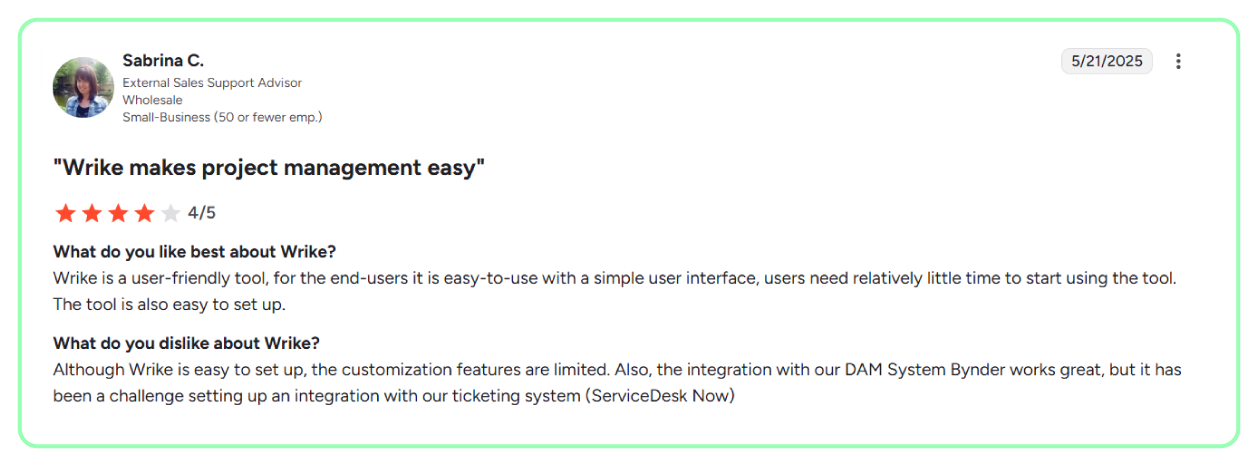
Wrike boasts seamless integrations with over 400 business apps such as Salesforce, Microsoft Teams, Slack, Google Drive, Jira, and hundreds more. In 2025, the platform refined its API and integration management to improve data syncing reliability and speed, crucial for real-time collaboration across dispersed teams.
For organizations with hybrid or remote workforces, this connectivity ensures project-related information flows smoothly between tools without manual effort or costly errors.
4. Scalable for large organizations with multiple departments
Wrike’s backend architecture supports anywhere from a handful of users to tens of thousands. Its fine-grained permissions system ensures that as your company scales, sensitive data stays protected, and team workflows remain uninterrupted.
The 2025 user experience enhancements also introduced better onboarding tools for new users, such as role-specific tutorials and guided setup wizards, helping reduce the friction of adding new team members quickly. This makes Wrike a reliable choice for organizations expanding rapidly.
Cons of Wrike
1. Overwhelming for marketing teams who just want simplicity
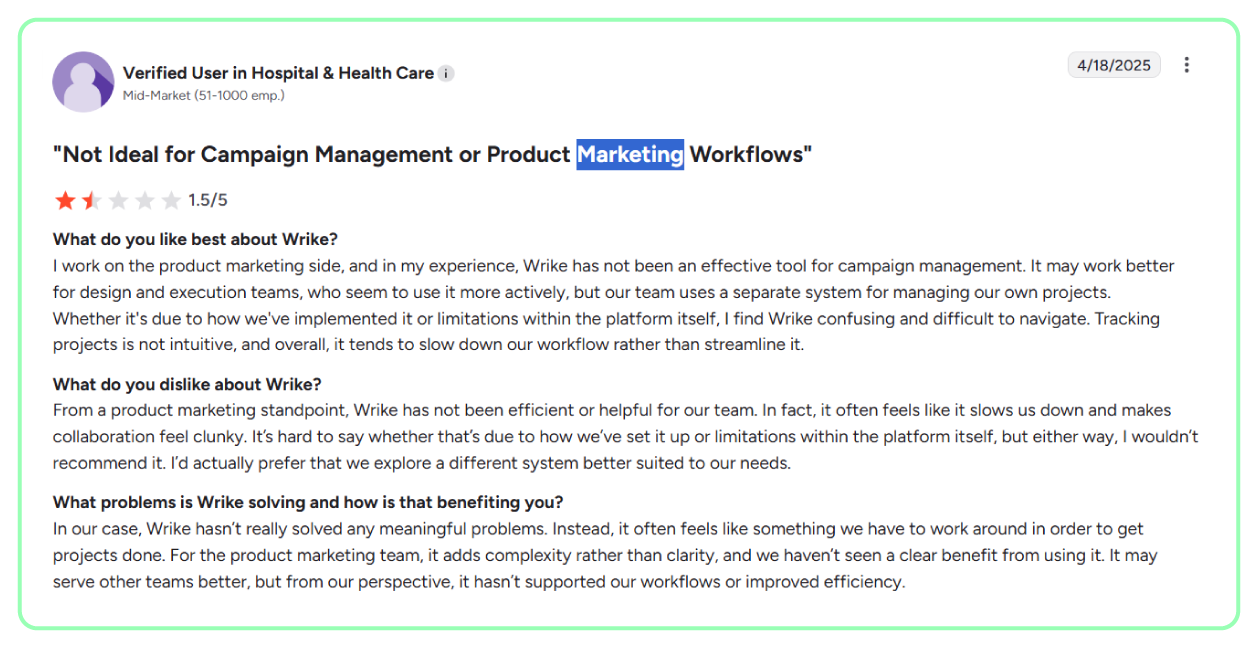
The platform’s general-purpose design means marketers need to sift through numerous options and menus to access essential campaign tools. This can make planning feel cumbersome and slow, especially when quick pivots and iterative work are required.
2. Steeper learning curve; requires training for adoption
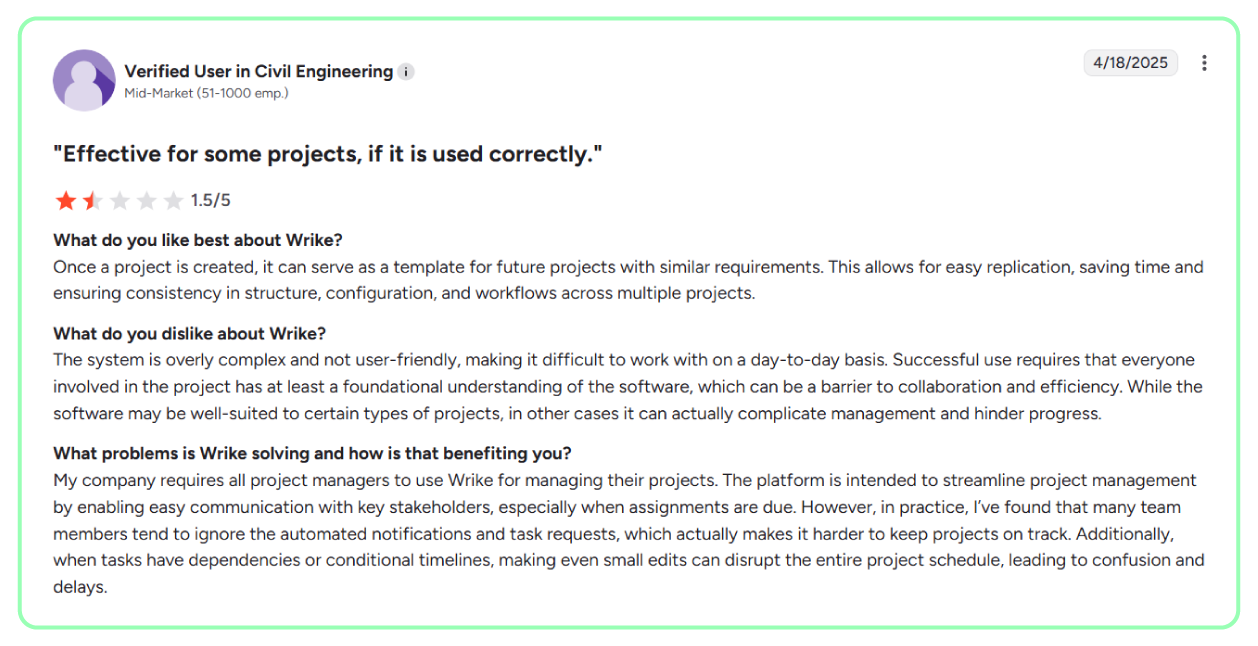
Although Wrike’s updates have added AI-guided setup and in-app assistance, the platform remains complex enough that new users face a learning curve. Organizations typically allocate dedicated resources and time for onboarding, including formal training sessions, video tutorials, and live support.
User reviews in 2025 frequently mention that mastering the full capabilities of Wrike requires patience and ongoing learning, which can pose challenges for fast-moving teams and smaller agencies without dedicated admins.
3. Pricing scales up quickly
Wrike’s pricing structure is tiered, starting at accessible levels for small teams but rising steeply when you add users or require premium capabilities like advanced automation, integrations, or custom reporting. Agencies and marketing departments with modest budgets often find the costs add up quickly, especially as projects multiply or collaboration expands across clients and external stakeholders.
4. Can feel cluttered with features not relevant to marketers
Because Wrike was designed for broad use across industries, it comes with features that simply aren’t relevant to marketers, like advanced IT workflows or detailed resource allocation tools. These extras add clutter to the interface.
Pros and cons of 5day.io
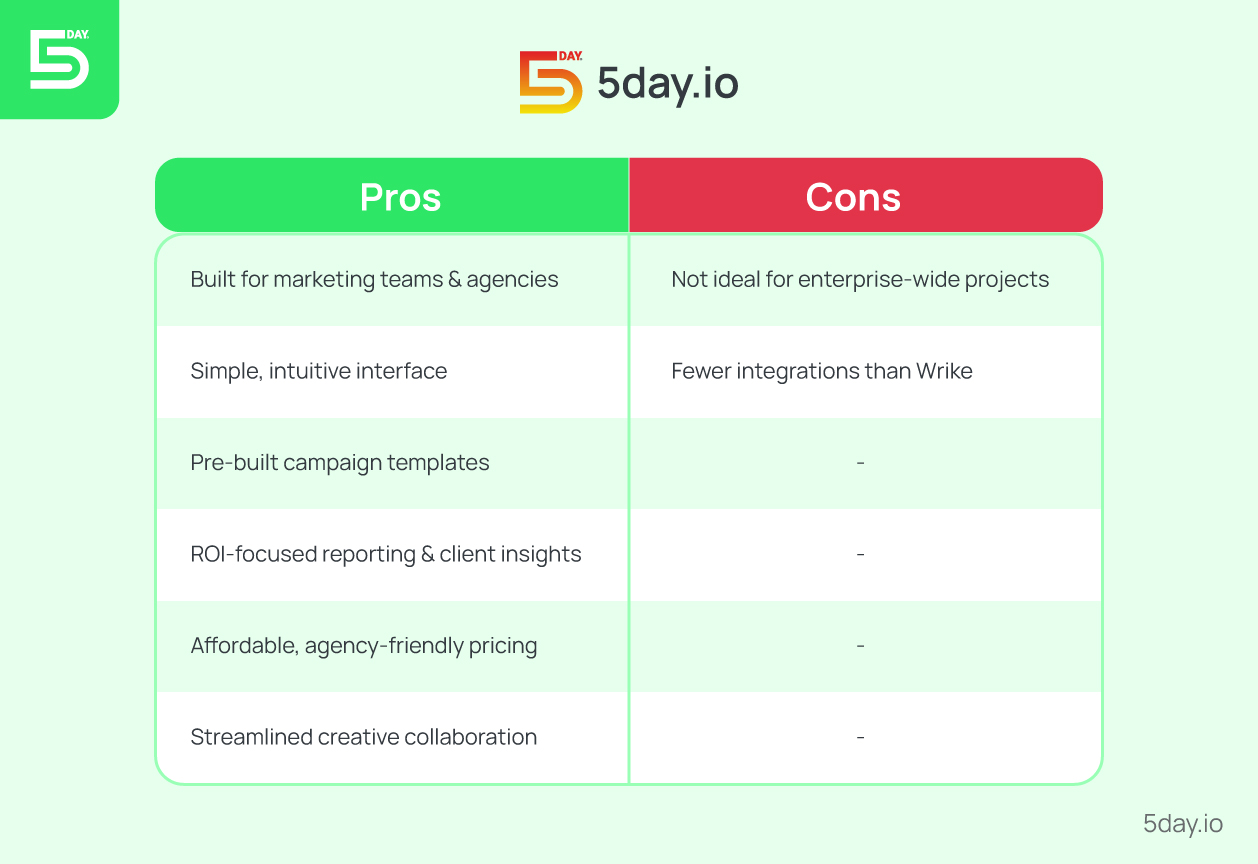
Let’s dive deeper into its strengths and limitations.
Pros of 5day.io
1. Provides a unified structure for every department
5day.io is built to bring an entire organization under one roof with a clear, structured way of working. What makes it powerful is the way it organizes work into a simple hierarchy of workspaces, spaces, projects, and tasks, so everyone knows exactly where things belong and how they connect.
At the top level, workspaces represent the big picture, often tied to business units or major functions. Within each workspace, spaces group related projects, giving departments a natural home for their priorities. From there, projects break work down into focused initiatives, while tasks and subitems get into the details.
Departments keep their unique workflows but still collaborate seamlessly. 5day.io also backs this structure with flexible tools designed to fit the way teams actually work.
2. Simple, intuitive interface—Organization-wide adoption happens quickly
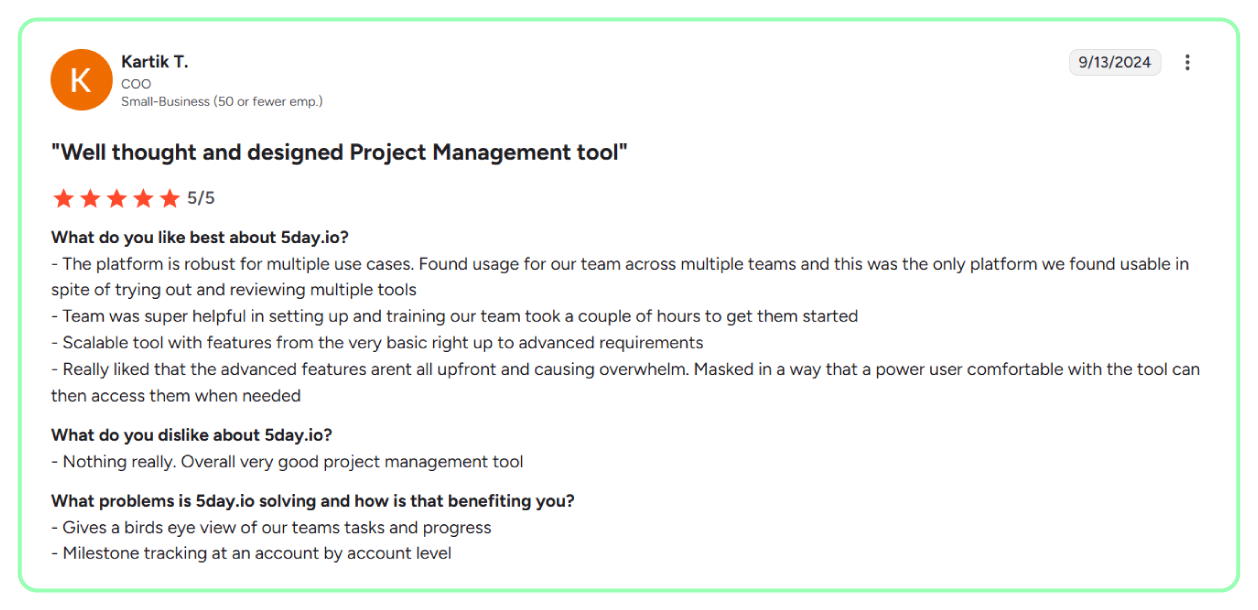
One of 5day.io’s biggest strengths is ease of use. The platform is clean, simple, and doesn’t overwhelm you with endless buttons and settings. Even non-technical team members can jump in and feel comfortable. You don’t need to sit through developer-led training sessions and cohort-based training to get started. Anyone can simply login and start using it, without any technical knowledge or prior project management platform experience. That’s why it’s a superior Wrike alternative to marketing teams.
3. Pre-built templates save time and reduce errors for all departments
5day.io streamlines business processes by offering thoughtfully designed, ready-to-use templates that span core functions such as marketing, product management, operations, events, and client services. They have been curated with utmost care and understanding of each function and nuance within them.
These templates embed standardized workflows, context-specific fields, and approval steps that align teams with best practices right from the get-go. Rather than spending hours building structures from scratch, users can select the relevant template and instantly gain access to workflow logic.
If any of the templates don’t work, you can easily customize them based on exactly what you want with drag and drop features, save them and reuse them for the future as well.
4. Focus on easier campaign ROI tracking and client reporting
5day.io has integration with campaign reporting and analytics tools, so you don’t need to wrestle with raw project data or manually translate it into ROI numbers. The platform automatically brings together time logs, progress tracking, and every stakeholder’s contribution into reports that are easy to share and even easier for clients to understand.
5day.io’s advanced yet simple-to-understand reports can highlight exactly what each client cares about most: billable vs. non-billable hours, project progress, or campaign outcomes. And because every project can be directly linked to a client within 5day.io, you can deliver tailored insights without extra work.
5. No hidden fees or costs of scaling
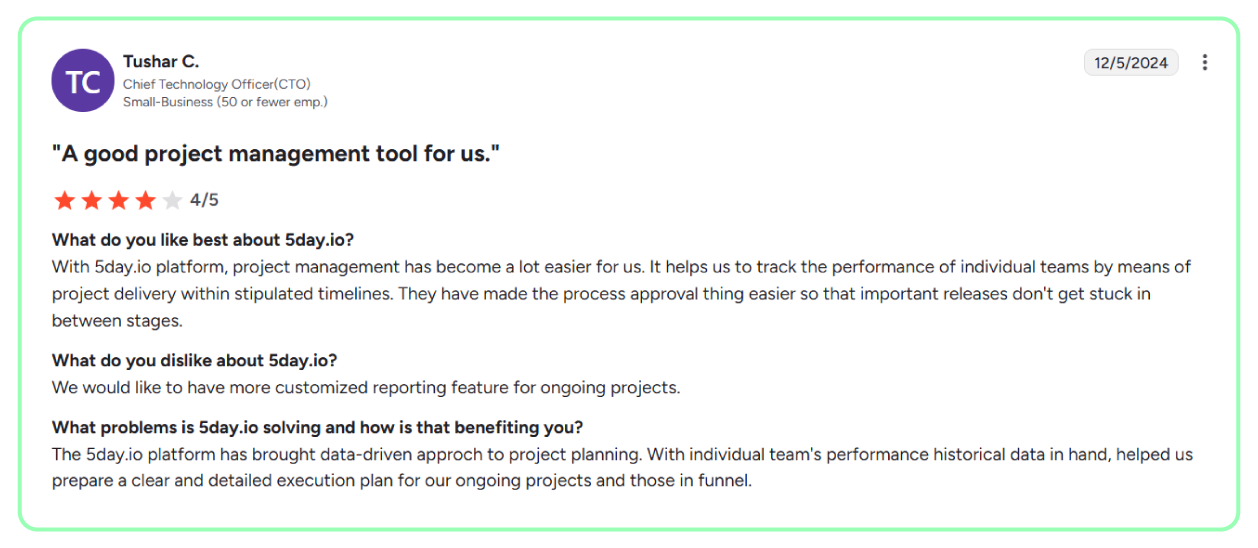
Unlike some enterprise tools that balloon in cost, 5day.io offers clear, predictable pricing designed for agencies and marketing teams. You can scale up without worrying about surprise expenses eating into your budget.
Cons of 5day.io
1. Not as feature-heavy for enterprise-level cross-department projects
Since it’s specialized, 5day.io doesn’t try to serve every department in a huge enterprise. For companies looking for a single platform to manage every aspect of their operations, Wrike or other enterprise tools may be a better fit.
2. Slightly fewer third-party integrations compared to Wrike
While 5day.io integrates with key marketing tools, its integration library isn’t as vast as Wrike’s. Large enterprises with diverse tool stacks might find this limiting, but for most marketing teams, the available integrations cover the essentials.
5day.io doesn’t want to be for everyone, and that’s its superpower. It’s lean and focused entirely on making campaign management easier for marketing teams.

Read Also: Social Media Campaign Checklist for Marketing Agencies
Why 5day.io is the best alternative to Wrike for marketing agencies
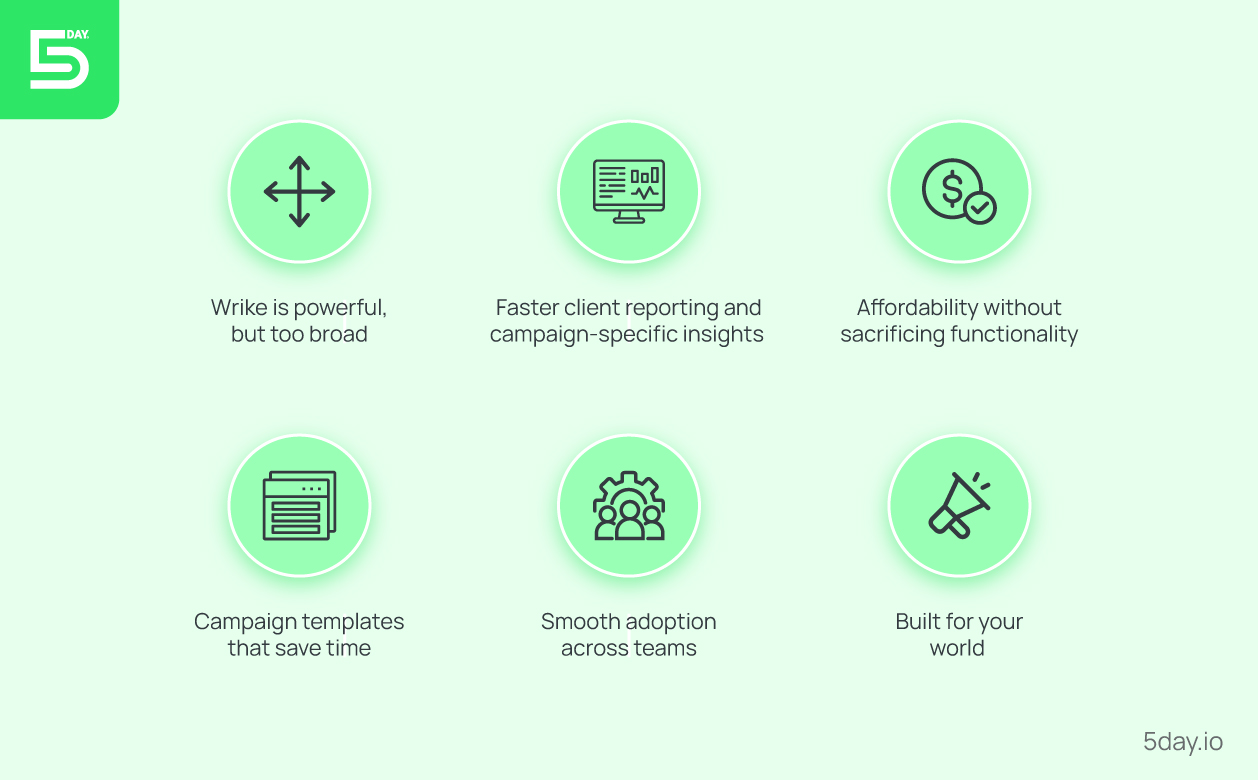
Agencies need the best project management software for marketing teams. They need a platform that understands their world entirely. That’s where 5day.io stands out as the best alternative to Wrike.
Wrike is powerful, but too broad
For agencies that live and breathe campaigns, Wrike often feels bloated. It offers every feature under the sun, but most of them are unnecessary for marketing teams just trying to plan, and report on campaigns.
5day.io eliminates that complexity by stripping away the noise and focusing entirely on marketing workflows. No endless customization. Just a clear, campaign-centered platform that lets teams move fast and stay in sync.
Faster client reporting and campaign-specific insights
Clients don’t want to see how many tasks were checked off in a project, they want results. 5day.io was built for this reality. Its analytics are designed around marketing metrics. Agencies can generate client-ready reports that highlight progress without spending hours piecing data together from multiple tools.
Cost effective without sacrificing functionality
For small to mid-sized agencies, Wrike’s pricing structure can quickly spiral as teams grow and need advanced features. What starts affordable often becomes an enterprise-level expense.
5day.io balances cost effectiveness and functionality.
Agencies get the features they actually need without paying for enterprise extras they’ll never use. This makes it sustainable as teams scale, without draining budgets.
Campaign templates that save time
Time is everything in agency life. Wrike requires users to build workflows from scratch or heavily customize templates for marketing use cases. That setup time adds up, especially when onboarding new clients.
5day.io comes with pre-built campaign templates designed for the realities of marketing. Agencies can hit the ground running and avoid the risk of missed steps or sloppy execution. That’s why it’s the best Wrike alternative in the market.
Smooth adoption across teams
Creative teams often find heavy project management tools confusing and frustrating. Wrike’s complexity can create resistance and leading to workarounds outside the system.
5day.io feels different.
Its interface is simple, and easy for anyone to pick up. Adoption is natural, not forced, meaning agencies actually get the benefit of everyone working in one place.
Built for your world
At its core, 5day.io isn’t trying to solve every business problem. It’s solving yours. Wrike may be the enterprise giant. But for marketing agencies that want a tool that speaks their language, and helps them deliver measurable results, 5day.io is the smarter choice.
Wrapping Up
Wrike is undeniably a strong and versatile platform, but its general-purpose nature often makes it overwhelming for marketing teams. Purpose-built for marketers and agencies, 5day.io strips away the clutter and focuses on what matters most.
For small to mid-sized agencies especially, 5day.io strikes the perfect balance of simplicity, and affordability. Teams can hit the ground running and prove value to clients without getting lost in the noise of enterprise-heavy tools.
Sign up for 5day.io’s 3-month free trial and experience the tool’s wide range of features today.
